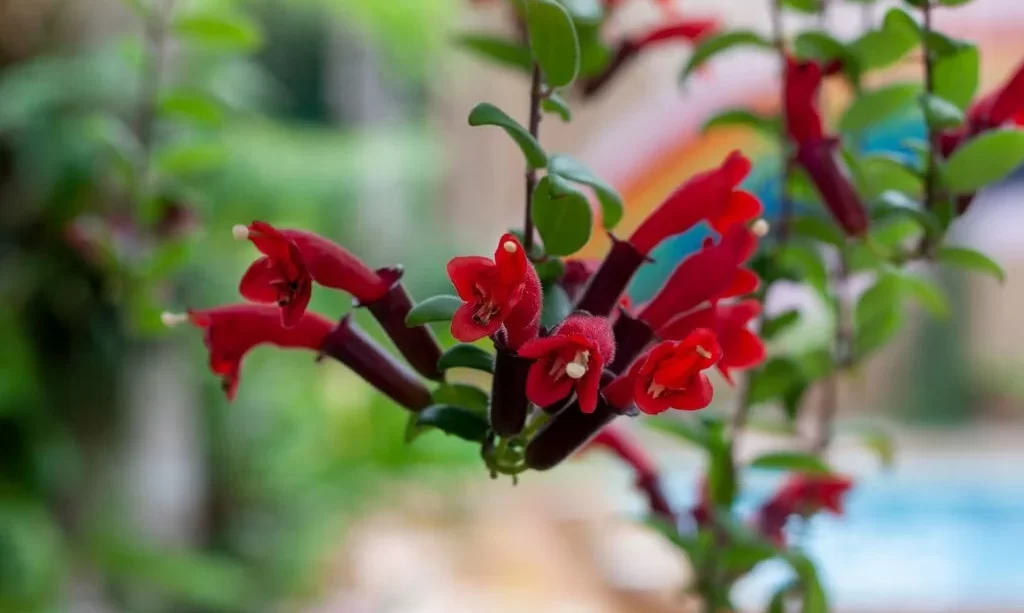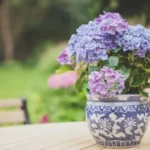The Lipstick Plant (Aeschynanthus radicans) is a captivating houseplant renowned for its eye-catching red tubular flowers. Whether you’re an experienced indoor gardener looking to expand your plant collection or a beginner eager to share the allure of this unique plant, propagating the Lipstick Plant is a rewarding and educational journey. In this comprehensive guide, we will explore the art of propagating the Lipstick Plant through two primary methods: stem cuttings and air layering. With the right materials and a bit of horticultural know-how, you can multiply the charm of this extraordinary houseplant and cultivate a thriving indoor garden.
- Growing indoors is easy under the right conditions; Miracle-Gro Houseplant Potting Mix combines key elements plants need to thrive
- Recommended for growing beautiful indoor houseplant varieties like Pothos, Spider Plants, Monstera, Philodendron, English Ivy and more
- This indoor plant soil is less prone to gnats, thanks to the combination of perlite, sphagnum and peat moss that’s just right
- Certified by the Mulch & Soil Council as a quality product in compliance with industry standards
- A single 4-qt bag fills an 8-inch container; for even more spectacular results, start regular feedings with Miracle-Gro Plant Food 30 days after planting
Gathering Materials
Before you embark on the propagation journey, it’s essential to gather the necessary materials. To successfully propagate the Lipstick Plant, you’ll need a sharp pair of scissors or pruning shears, pots or containers for planting, a well-draining potting mix, rooting hormone (optional but beneficial for stem cuttings), and sphagnum moss (primarily used for air layering). These materials will ensure that you’re well-prepared to propagate and nurture the new Lipstick Plant specimens.
Preparing the Parent Plant
The first step in the propagation process is selecting a healthy and mature Lipstick Plant as the parent. You’ll want to ensure that the parent plant is free from diseases or pests, as this will impact the health of the new plants. To prepare the parent plant for propagation, carefully inspect it for any signs of pests and identify suitable stems for either cuttings or air layering.
For stem cuttings, choose healthy stems with enough length and a few leaves. For air layering, it’s crucial to select a suitable section of the stem that is conducive to the air layering process. Proper preparation ensures that you start with the best possible materials for successful propagation, and it’s the foundation for the thriving future of your new Lipstick Plants.
Propagating with Stem Cuttings
Propagating the Lipstick Plant through stem cuttings is a popular and straightforward method. Here’s how to do it:
- Taking Stem Cuttings: Begin by selecting healthy stems from the parent plant. Look for stems that are at least a few inches long and have several healthy leaves. Using sharp scissors or pruning shears, make a clean cut just below a node, which is where the leaves and roots will develop.
- Preparing the Cuttings: To prevent rot and encourage root development, let the cuttings air dry for a few hours, allowing a callus to form at the cut end. While the use of rooting hormone is optional, it can expedite the rooting process. If desired, dip the cut end of each cutting in rooting hormone.
- Planting the Cuttings: Fill small pots or containers with a well-draining potting mix. Insert the prepared cuttings about an inch deep into the soil, ensuring that one or two leaves remain above the surface. Gently firm the soil around the cuttings.
- Provide Proper Care: Place the pots in a location with bright, indirect light. Keep the soil consistently moist but not waterlogged. Overwatering should be avoided to prevent root rot. As the cuttings develop roots and new growth, they will grow into independent Lipstick Plants.
Propagating by Air Layering
Air layering is an effective method for propagating the Lipstick Plant, especially when you have longer stems or when you prefer not to cut the plant. Here’s how to do it:
- Selecting a Suitable Section: Choose a healthy and flexible section of the stem you wish to propagate. This section should have a length of about 4-6 inches and should be free from any leaves or branches.
- Creating the Air Layer: Remove a small section of bark from the stem, typically around 1 inch wide, revealing the inner wood. Wrap this exposed area with moist sphagnum moss, making sure it stays in place.
- Encouraging Root Growth: To stimulate root development, cover the moss with plastic wrap or a clear plastic bag, securing it above and below the wrapped area. Ensure that the environment remains humid and conducive to root growth.
- Transplanting the New Plant: Once roots have formed, which can take several weeks, you can gently remove the air-layered section from the parent plant and transplant it into a pot with well-draining potting mix. Continue to care for it as you would for a mature Lipstick Plant.
Whether you choose to propagate your Lipstick Plant through stem cuttings or air layering, both methods are effective ways to create new plants that showcase the captivating beauty of this houseplant. With the right care and attention, your newly propagated Lipstick Plants will flourish, bringing their vibrant red tubular flowers to your indoor spaces for years to come.
Caring for Propagated Plants
Once you’ve successfully propagated Lipstick Plants, it’s crucial to provide them with proper care to ensure their health and vitality. Here are the key steps to follow:
- Watering: Keep the soil consistently moist but not waterlogged. Water when the top inch of the soil feels dry. Avoid overwatering, as Lipstick Plants are sensitive to excessive moisture.
- Light: Place your propagated Lipstick Plants in an area with bright, indirect light. These plants thrive in such conditions and should be shielded from direct sunlight, which can damage their delicate leaves.
- Temperature: Maintain a warm environment for your Lipstick Plants, as they prefer temperatures between 65-75°F (18-24°C). Protect them from cold drafts and frost.
- Humidity: Lipstick Plants appreciate higher humidity levels. Using a humidity tray or a room humidifier can help maintain ideal moisture levels.
- Feeding: During the growing season, typically from spring to early autumn, feed your Lipstick Plants with a balanced liquid fertilizer every 4-6 weeks. Reduce or cease fertilization during the dormant winter period.
- Repotting: As your propagated Lipstick Plants grow and mature, they may require repotting to provide more space for their root systems. Repotting is typically necessary every 2-3 years.
Troubleshooting Common Issues
During the propagation and care of Lipstick Plants, you may encounter common issues. Here’s how to address them:
- Pests: Keep a vigilant eye for common indoor plant pests like aphids, mealybugs, and spider mites. These can be controlled with insecticidal soap or neem oil. Isolate affected plants if necessary.
- Yellowing Leaves: Yellowing leaves may indicate overwatering, insufficient light, or poor drainage. Adjust your care routine accordingly.
- Lack of Growth: If your propagated Lipstick Plants aren’t growing as expected, review their care conditions. They may be in a dormant phase, so be patient.
- Leaf Drop: Leaf drop can occur due to various factors, including sudden temperature changes, overwatering, or a lack of humidity. Address the root cause to prevent further leaf loss.
Conclusion
Propagating the Lipstick Plant is a fulfilling and enjoyable gardening journey that allows you to expand your plant collection and share the unique allure of these captivating houseplants with others. Whether you’ve chosen stem cuttings or air layering as your propagation method, your new Lipstick Plants will brighten your indoor spaces with their vibrant red tubular flowers.
With the right care and attention, these charming plants will continue to dazzle with their beauty and lush foliage. Share your propagation success with fellow plant enthusiasts and encourage them to experience the enchantment of the Lipstick Plant in their own homes.




